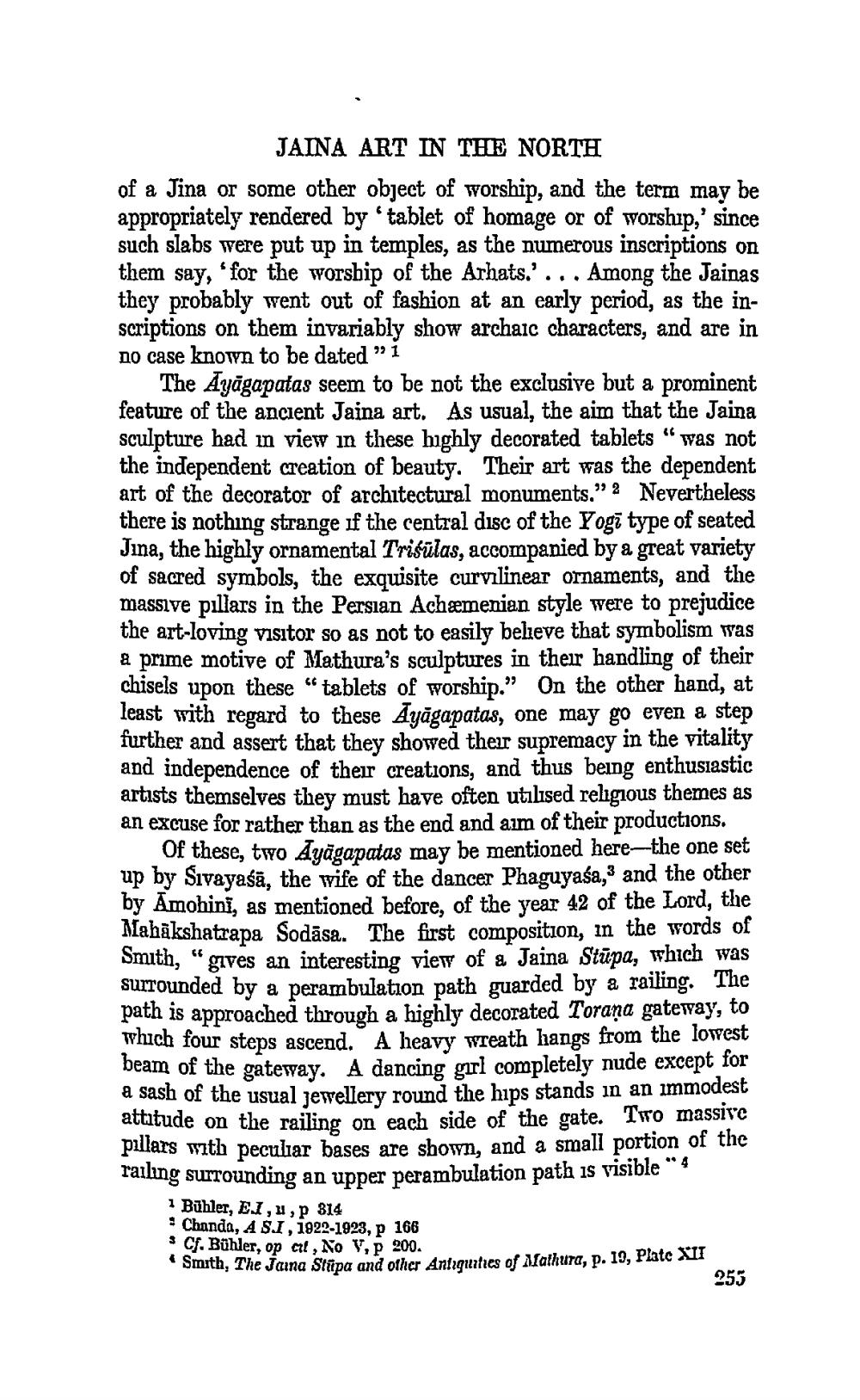________________ JAINA ART IN THE NORTH of a Jina or some other object of worship, and the term may be appropriately rendered by 'tablet of homage or of worship,' since such slabs were put up in temples, as the numerous inscriptions on them say, for the worship of the Arhats.' ... Among the Jainas they probably went out of fashion at an early period, as the inscriptions on them invariably show archaic characters, and are in no case known to be dated" 1 The Ayagapatas seem to be not the exclusive but a prominent feature of the ancient Jaina art. As usual, the aim that the Jaina sculpture had in view in these highly decorated tablets "was not the independent creation of beauty. Their art was the dependent art of the decorator of architectural monuments." 2 Nevertheless there is nothing strange if the central disc of the Yogi type of seated Jina, the highly ornamental Tribulas, accompanied by a great variety of sacred symbols, the exquisite curvilinear ornaments, and the massive pillars in the Persian Achaemenian style were to prejudice the art-loving visitor so as not to easily believe that symbolism was a prime motive of Mathura's sculptures in their handling of their chisels upon these "tablets of worship." On the other hand, at least with regard to these Ayagapatas, one may go even a step further and assert that they showed their supremacy in the vitality and independence of their creations, and thus being enthusiastic artists themselves they must have often utilised religious themes as an excuse for rather than as the end and aim of their productions. Of these, two Ayagapatas may be mentioned here-the one set up by Sivayasa, the wife of the dancer Phaguyasa, and the other by Amohini, as mentioned before, of the year 42 of the Lord, the Mahakshatrapa Sodasa. The first composition, in the words of Smith, "gives an interesting view of a Jaina Stupa, which was surrounded by a perambulation path guarded by a railing. The path is approached through a highly decorated Torana gateway, to Which four steps ascend. A heavy wreath hangs from the lowest beam of the gateway. A dancing girl completely nude except for & sash of the usual jewellery round the hips stands in an immodest atatude on the railing on each side of the gate. Two massive pillars with peculiar bases are shown, and a small portion of the ung surrounding an upper perambulation path is visible" 4 1 Buhler, E.I,, p 814 . Chanda, A SI, 1922-1923, p 166 * Cf. Buhler, op at, No V, p 200. mith, The Jaina Slipa and other Antiquities of Mathura, p. 19, Plate XII 253




